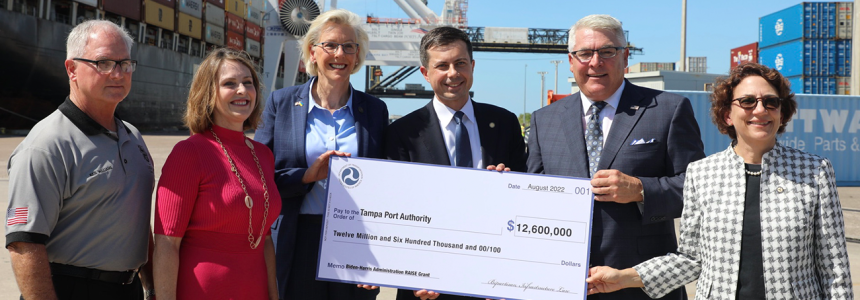News & Updates
RAISE Grant to Expand Port Tampa Bay Bulk Berths

Port Tampa Bay will receive $12.6 million in grant funding from the U.S. Department of Transportation to expand and diversify a berth at fast-growing Port Redwing. The port’s funding allocation is part of $1.5 billion in grant funding made available through the Rebuilding American Infrastructure with Sustainability and Equity (RAISE) discretionary grant program.
Port Tampa Bay will use RAISE funding to create Berth 301 at its satellite facility, Port Redwing. The new berth will provide room for a third large ship to be worked efficiently.
“The berth 301 project will have a generational impact on our community in terms of economic development and well-paying jobs. Port Redwing has seen tremendous growth since the deepening and expansion of the Big Bend Channel. As our community continues to see record population growth, it is important to provide an efficient way to move construction and other bulk cargoes. This project optimizes supply chain economics and helps keep wear and tear on roads to a minimum,” explains Paul Anderson, Port Tampa Bay CEO & President.
In the past 12 months, the port handled over 1 million tons at Port Redwing. Port tenants and customers, including The Mosaic Company, Logistec, SESCO, Ardent Mills, and Precision Build Solutions/Tampa Tank/Florida Structural Steel. will directly benefit from this project, as they are able to diversify their operations and make long-term plans and commitments to serving our region. The project makes an important and immediate economic difference for West and Central Florida’s non-containerized industries – including cement, prilled sulfur, aggregates, steel, food and agriculture, wallboard and construction, and project cargo, among others.
Nearly 10 million people reside within 75 miles of our port and roughly 200,000 new residents have made their homes in Hillsborough County in the last decade. In addition to the numerous economic benefits, this project will also eliminate nearly 3 million truck miles annually and reduce wear and tear in nearby communities, which will cut emissions, enhance roadway safety, and improve truck operations.
